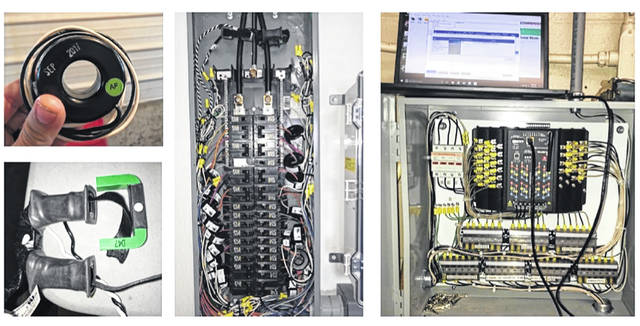
As agricultural systems have become more sophisticated and automated, the electrical demands of many farms have increased, requiring enhanced needs for high quality electric to power equipment. Due to increased electrical usage, many farms are now on a commercial rate structure. Unlike residential rates, which are based primarily on total energy usage measured in kilowatt hours (kWh), commercial accounts are also charged for the highest peak demand usage spike over a short time period measured in kilowatts (kW). These demand charges could represent a significant portion of the farm electric bill.
Some demand charges will be clearly labeled on your bill, however, sometimes the demand charges are calculated as described in your rate tariff and listed as “Distribution related Component” or “Distribution Charges.” Demand charges are based on the maximum amount of electricity drawn from an electric power system at a single point in time, generally measured in megawatts (MW) or kilowatts (kW). While demand charges are based on peak usage in a specific time period, it is not necessarily an instantaneous peak. Instead, most utilities measure a peak demand as a rolling average over a specific time interval, typically 15 or 30 minute intervals.
A team of OSU Extension Educators have been analyzing energy use on farms across Ohio to better understand how peak demand affects agricultural facilities. This information will help farmers implement energy management strategies. To collect the data, they installed multifunction energy meters capable of recording energy usage for up to 24 critical loads on the farm. By collecting granular electric usage data, the team analyzes trends of energy consumption, peak demand, and power factor for each measured circuit.
Learn the details on Jan. 29
On Jan. 29, Eric Romich, OSU Extension Field Specialist in Energy Development, will discuss the team’s findings and discuss how farmers can use this information to lower energy bills. Join us at the Champaign County Community Center, Auditorium – 1521 South US Hwy 68, Suite B100, Urbana, OH 43078. The cost to attend is $5 and includes breakfast. Breakfast will be served at 8 a.m. and the program will begin at 8:30 a.m. An RSVP is required by 1/27. Contact Deb Knowles at 937-484-1526 or [email protected] to register. For program questions, contact Amanda Douridas at [email protected]. Learn more about energy resources at https://energizeohio.osu.edu/.


